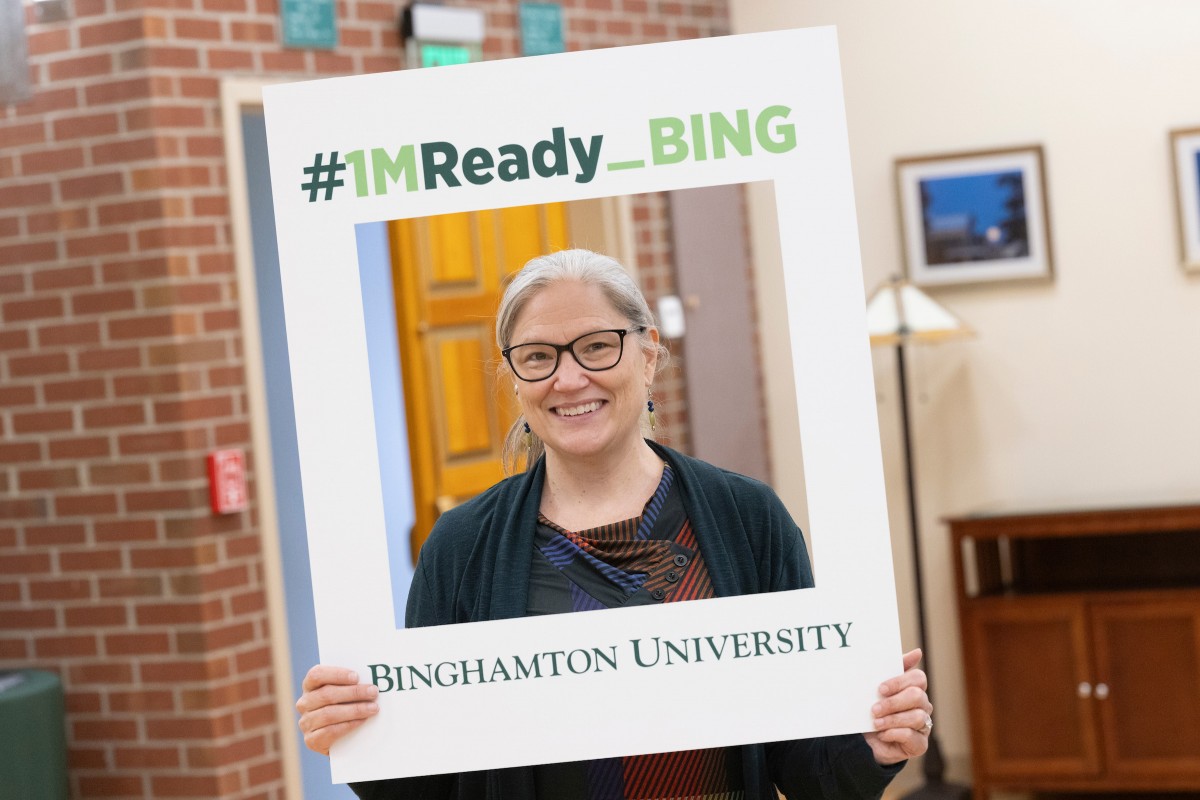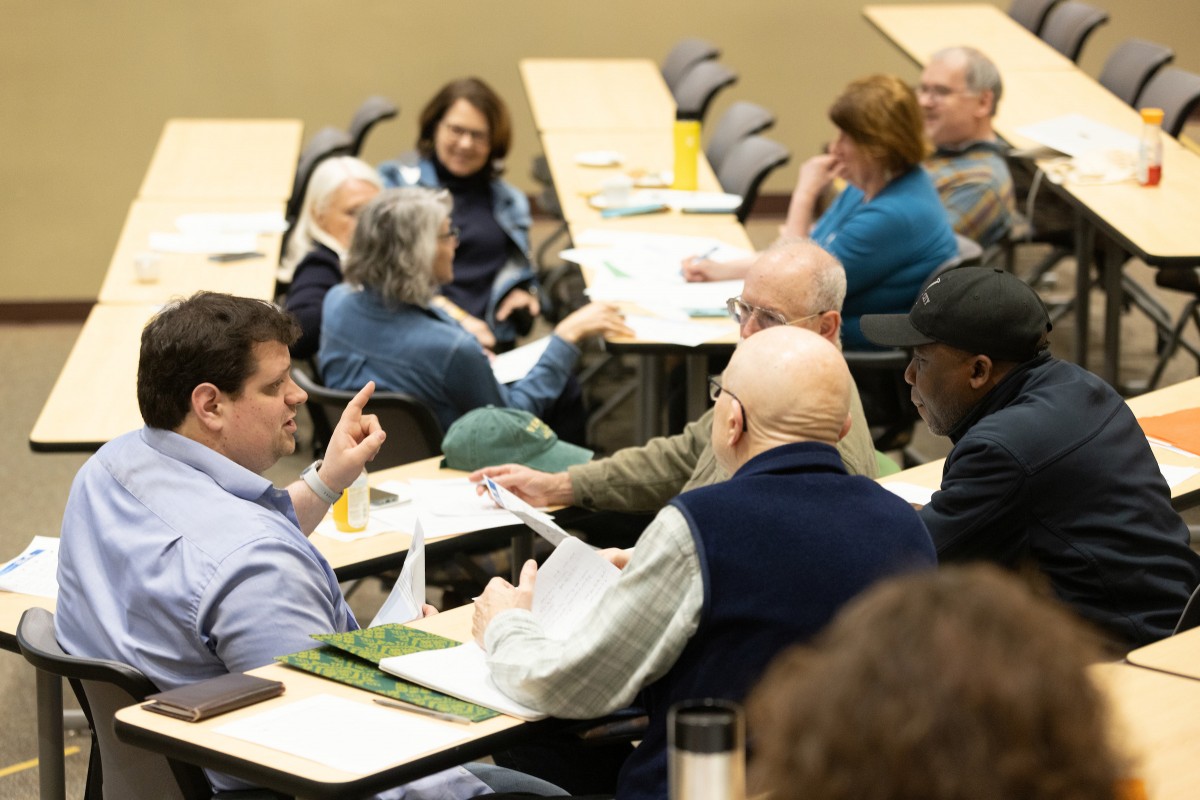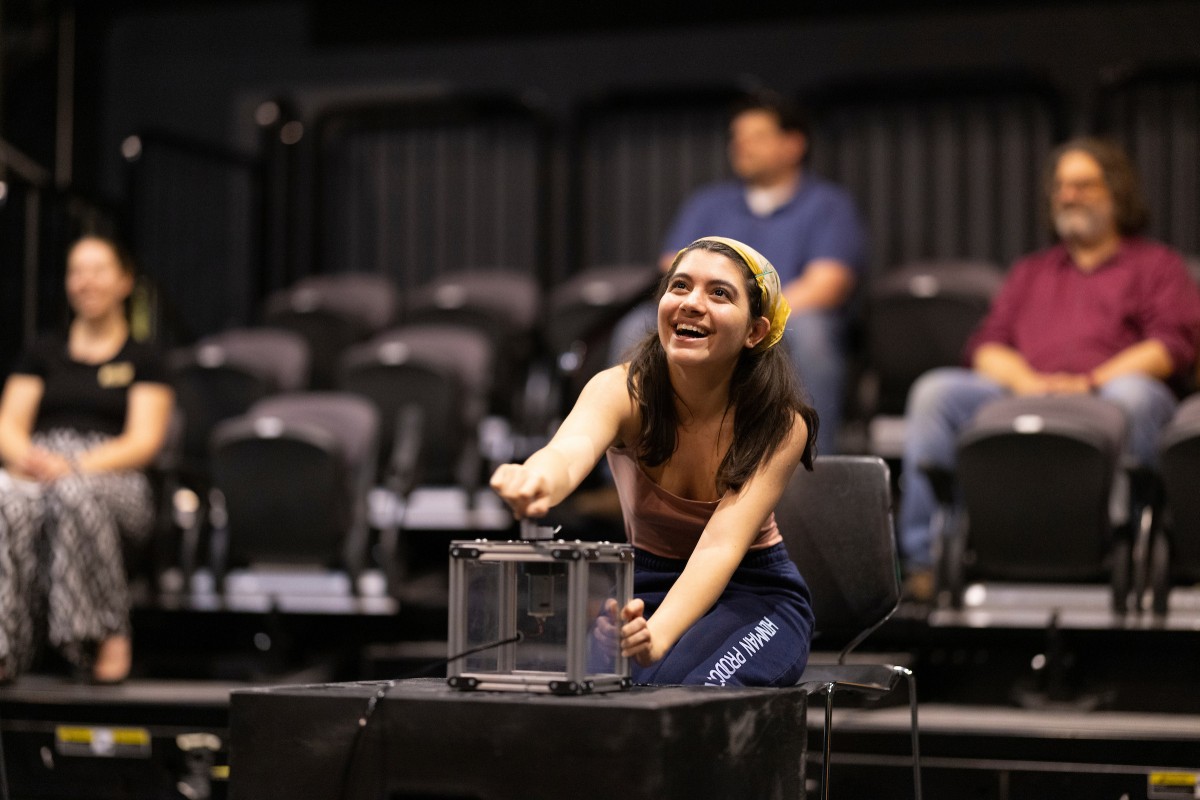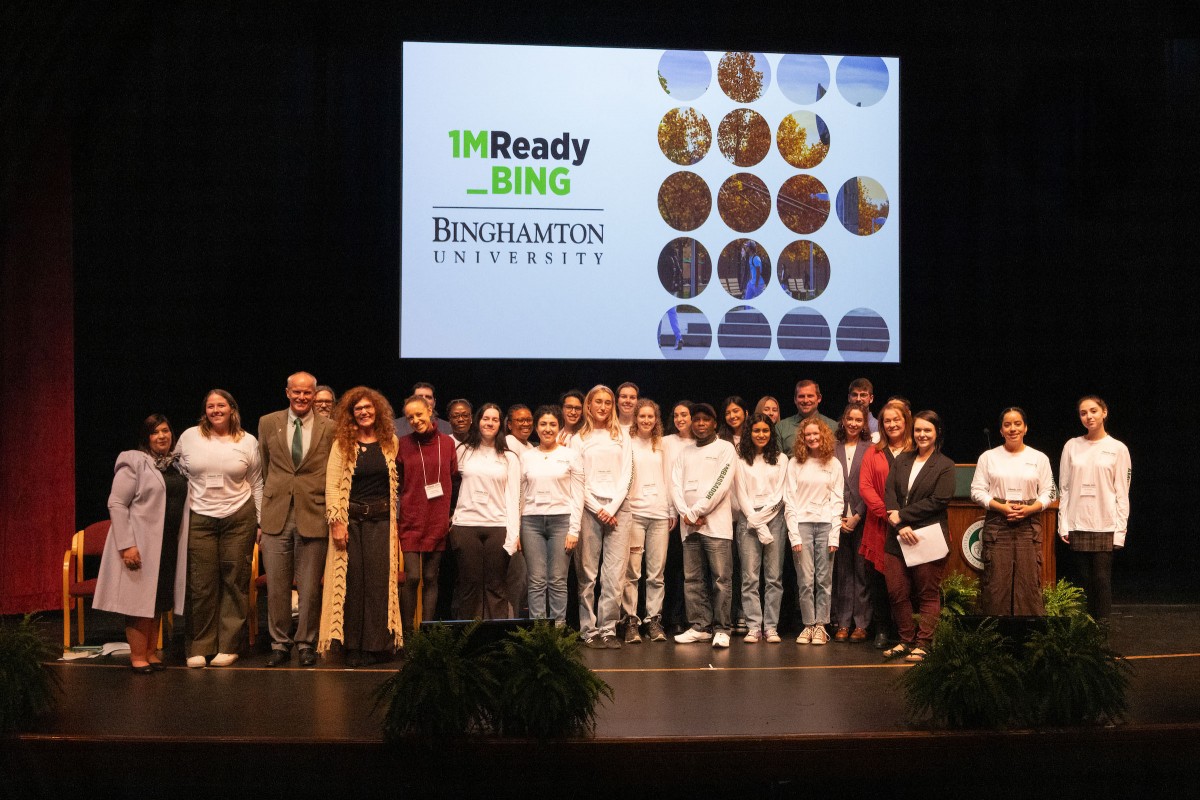Climate change is here. Now what?
An interdisciplinary initiative prepares the community for a changing world
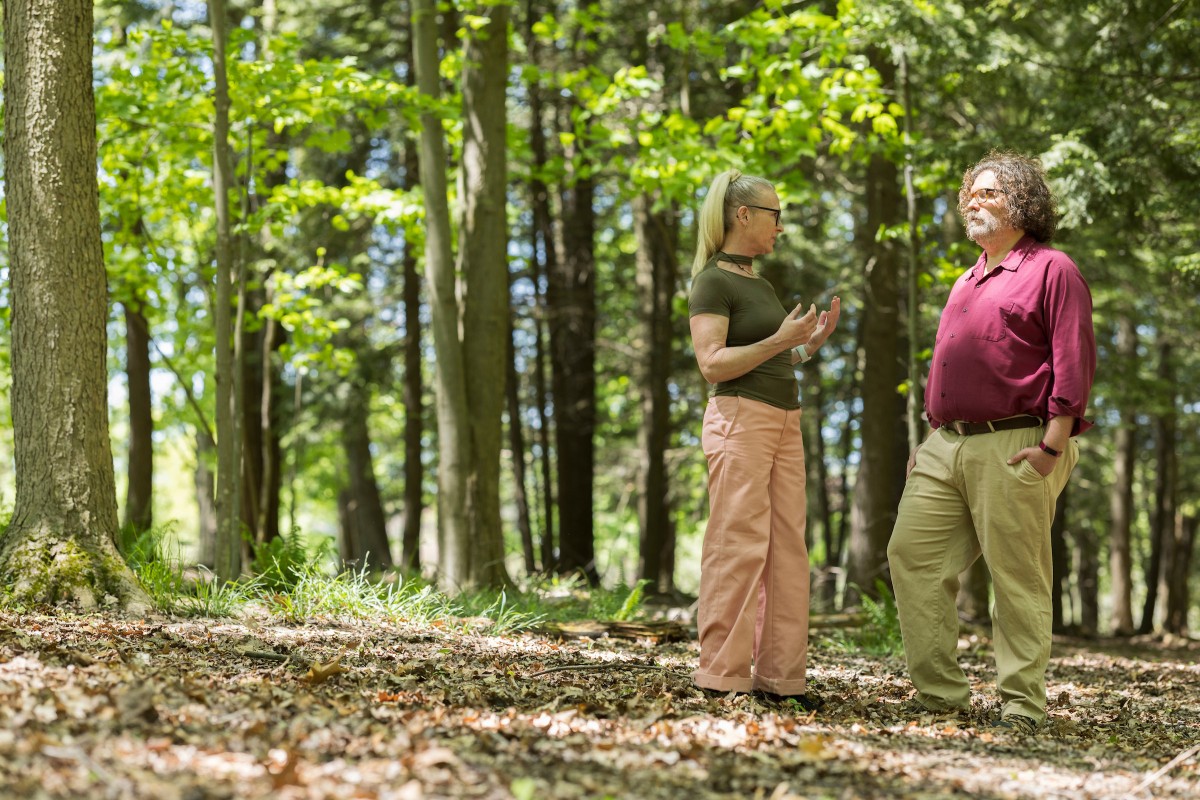
Climate change is already here: just look around you.
To keep global warming to no more than 1.5 degrees above the preindustrial norm — as called for in the Paris Agreement — emissions need to be reduced by 45% by 2030 and reach net zero by 2050, according to the United Nations. But for a brief period in November 2023, data from the European Copernicus Climate Change Service indicate that global temperatures passed the two-degree threshold, a benchmark that scientists warn could lead to catastrophic consequences.
What can we do — any of us — in the face of potentially devastating global change?
“I started thinking about what I can do to protect my family and my home. It doesn’t take long for you to realize that it’s not the wrong scale; you can’t climate-proof your house,” says Binghamton University Associate Professor of Economics Andreas Pape. “On the other hand, thinking about the scale of the world is overwhelming; anything I can do is a drop in the bucket on a world scale.”
But not when it comes to the local community.
Enter Binghamton 2 Degrees, an initiative Pape began with English Professor Leslie Heywood to prepare both the campus and the surrounding community for the realities of climate change. Rooted in Harpur College of Arts and Sciences, the initiative encompasses the arts. and humanities as well as the STEM fields for a comprehensive, interdisciplinary approach. It’s now University-wide, with participation across Binghamton’s schools.
The initiative kicked off in the summer of 2023 with a community arts festival in the City of Binghamton’s Confluence Park. Since then, multiple events have followed on campus and in the community, organized according to monthly themes. The initiative also serves as a locus for Binghamton professors to share meaningful research and has sparked additional research trajectories around climate resilience.
“It’s very much an action research project; we are part of making the change,” says Environmental Studies Professor Pamela Mischen, the University’s chief sustainability officer. “I hope we’ll be able to work with our partners over the coming years to make this community more adaptive and resilient to climate change.”
Climate resilience involves facing and answering an ever-expanding series of uncomfortable questions: What are the local community resources for renewable energy, such as wind or solar? How can Binghamton — which has already endured several episodes of catastrophic flooding since the turn of the century — prepare for future natural disasters? Can local farms and food distribution networks diversify to ensure food security?
In addition to a $10,000 grant from the Federal Emergency Management Agency, the initiative has applied for funding from the National Oceanic and Atmospheric Administration and the Environmental Protection Agency, Mischen says.
The focus on preparation and the project’s interdisciplinary nature appeals to School of Management Associate Professor Rory Eckardt and has shaped his own research. Eckardt is working with Pape to develop a class that would have students partner with community organizations — from schools to businesses to airports — to help them prepare for future change.
“Often climate change is really hard for us to think about, myself included, because we have a tendency think about things more in a near-term kind of way,” Eckardt reflects. “Research suggests we can hold four or five ideas in our mind at one time, and climate change is longer-term, involves nonlinear changes and can be complex.”
Climate anxiety
Climate change will do more than shift weather patterns and flood coastal communities. Increasing levels of carbon dioxide will decrease the productivity of such staple crops as corn, soybeans, wheat and rice, while weather changes will hit the current breadbasket with drought and strain aquifers in the west, Mischen says. That will likely prompt changes in New York state’s own agricultural industry to meet the need.
“Some research suggests that Binghamton will be something of a climate haven,” Pape points out. “Upstate New York isn’t a bad place to be relative to climate change; we’re far enough from the coast that we won’t face direct coastal issues and have plenty of water.”
Binghamton’s good fortune on the climate front could spark its own set of crises — such as an influx of climate refugees from regions inundated by rising sea levels or afflicted with drought or catastrophic heat. The coronavirus pandemic was a harbinger of future migration, reversing traditional patterns as urban dwellers sought refuge in upstate New York and rural New England.
In classes and around campus, Mischen finds that many Binghamton students experience climate anxiety — a deep uncertainty over the shape their lives will take. Some debate whether they should have children of their own. Globally, climate-related despair has driven some young people to suicide, according to Lorena Aguilar, executive director of Binghamton University’s Kaschak Institute for Social Justice for Women and Girls.
“There’s this consistent feeling of uncertainty for the future,” acknowledges Samantha Findeisen ’23, MA ’24, a master’s student in the sustainable communities program and one of Binghamton 2 Degrees’ two graduate assistants.
Binghamton 2 Degrees’ approach to the issue is realistic, notes Chloe Long, a senior psychology major involved with Zero Hour, a student climate justice organization that has conducted trash cleanups in Binghamton and hosts an annual Earth Day celebration in Recreation Park.
“Two degrees of warming is almost guaranteed at this point,” she observes. “I love the focus on preparing the community because this is our reality.”
That realism drew Professor of Systems Science and Industrial Engineering Hiroki Sayama into the project early on. While the environmental movement traditionally focuses on individual measures such as recycling, composting food waste or eating locally, that’s not enough to forestall the changes already here, he says. And when national governments aren’t taking sufficient action, the community is what remains.
A shift in thought processes is key to taking meaningful action — and that starts with conversation.
“Climate change is really a global issue, but we can have a tangible impact in shifting public opinion,” Sayama says. “If people are more comfortable talking about climate change in a local setting, they will discuss the practical actions they are taking or plan to take.”
Community connections
The local impact of climate change is multifaceted, and so too is Binghamton 2 Degrees’ work. Organized according to monthly themes such as food, health, energy, flooding and housing, monthly events include workshops, discussions with community organizations and more.
The monthly community meetings have brought in residents, local government officials and other institutions, says Barrett Brenton, faculty engagement associate for Binghamton’s Center for Civic Engagement and a biocultural anthropologist; he is also involved with a largescale partnership between the local Board of Cooperative Educational Services and the Cornell Cooperative Extension to provide education on nutrition, agriculture and gardening in schools.
Binghamton 2 Degrees has inspired Assistant Professor of Social Work Monica Adams to broaden her research focus in food insecurity, she says. She serves on the initiative’s food working group, which educated summer festival-goers on the link between food waste, food insecurity and climate change, and has taken part in panel discussions that link climate change with access to housing, medical care and food.
The spring 2024 semester culminated with a two-day Climate Change Summit, co-sponsored by the United Way of Broome County, Southern Tier 8, Broome County Department of Planning and the Southern Tier Chapter of the American Red Cross.
The first day brought community organizations together to discuss climate change in six areas: infrastructure, social services and refugees, health, food and agriculture, housing, and energy. The second focused on individual efforts to mitigate and prepare for climate change. It included a roleplaying exercise that’s part of a climate change policy simulator, which drives home the complex and far-reaching nature of the issue.
One of Binghamton 2 Degrees’ end goals is building mutual-aid networks in different neighborhoods and across the region, says Research Assistant Professor in Environmental Studies David Mixter. As a small city, the scale of Binghamton and surrounding communities makes it well-suited for this sort of project; a city with a larger population would pose an entirely different range of challenges.
“We’re hoping that the people who participate in the breakout groups will form persistent working groups, and that Binghamton 2 Degrees will help support those working groups over the next few years to put these plans in place for the larger community,” Mischen says.
Climate and the arts
The arts and humanities are an essential part of Binghamton 2 Degrees, allowing participants to confront the realities of climate change in a way that speaks to their hearts and imaginations. That’s why the initiative kicked off with a community arts festival, which drew more than 800 people and featured poetry, storytelling, painting and music.
“Artistic productions have a direct way of reaching audiences and motivating them to see themselves in relation to these issues,” Heywood says. “Art gives you a more direct form of communication with what people really care about.”
Heywood, who has taught creative nonfiction and memoir for 30 years, uses storytelling to engage people with climate issues. She had early exposure to environmentalism; her father served as director of development for Rensselaer Polytechnic Institute’s Darrin Fresh Water Institute in the 1970s, and she grew up hearing about acid rain and a grim future in which the American West runs out of water.
At a March event on flood preparation held in conjunction with the Red Cross, she led a mini climate-storytelling workshop, in which she asked participants to jot down their personal experiences.
“Not just intellectually, but with our bodies, with our hearts, everything that we believe and feel and which motivates us,” she explains of the storytelling process. “Our intellectual minds are only a part of that.”
Climate change has also inspired artistic creation, from music and poetry to theater. Nathan Wheatley, a lecturer and lighting designer in the Theatre Department is working with Musical Theatre Director Tommy Iafrate on Pedal-Powered Theater, in which audience-directed hand-crank and pedal devices trigger stage effects — such as an alarm clock, a lamp or a bubble machine.
The project, still in its proof-of-concept phase, drives home what power generation really entails in a memorable and fun way. After all, if you’re using electricity, something needs to generate power — whether feet on pedals, coal in a generation plant or sunlight on a solar panel. An awareness of this makes us less likely to waste power and more likely to opt for sustainable sources, Wheatley explains.
During the planning phase, Wheatley looked at the campus’ energy dashboard, which charts energy use throughout the day in different buildings. Energy also fluctuates when major productions are on campus — something that Wheatley knows well. During shows, lighting technicians may install between 250 and 300 units in Watters Theater, ranging from 575 to 1,000 watts each; a handful are even more powerful. It’s enough to power a part of a city block, he acknowledges.
Long-term, Wheatley would like to expand his show, with additional cranks, pedals and effects, and take it on tour in schools and the community.
“Art isn’t some shiny thing that hangs on a wall or is in a showcase; it’s a robust tool to achieve substantial outcomes,” he says.
Changing perspectives
In addition to community outreach and events, Binghamton 2 Degrees has directly fostered research, using surveys, interviews and social media to document how the program potentially impacts public attitudes and behaviors.
Graduate assistant Ancilla Marie Inocencio, a doctoral student in economics, is involved with data analysis on the survey project. More than 400 people completed the initial survey, which explores how people’s deeper motivations influence their behaviors surrounding climate change.
“We’re still crunching the numbers, but generally, I can say that worldview plays an important role in how people behave related to climate change, whether by adopting green technology, avoiding meat or preferring to use a bicycle rather than driving,” Inocencio says. “These behaviors aren’t as highly linked to other demographic characteristics as we would imagine.”
The art and narrative side is an experiment in its own right, according to Mixter, an anthropologist who also serves as the vice president of the Broome County Arts Council. In addition to the survey research, he is involved in a more qualitative, interview-based project that aims to understand the emotions and ideas that underpin individuals’ reactions to climate change.
Long-term, those involved in Binghamton 2 Degrees would like to see the initiative expand to other communities in New York and across the country.
“From the beginning, we were hoping that this would serve as a good proof-of-concept for expansion to other areas,” Eckardt says. “Collectively, we can start to think more about what climate change means for my community, whatever that community is, and what we should be doing to prepare for that now.”

